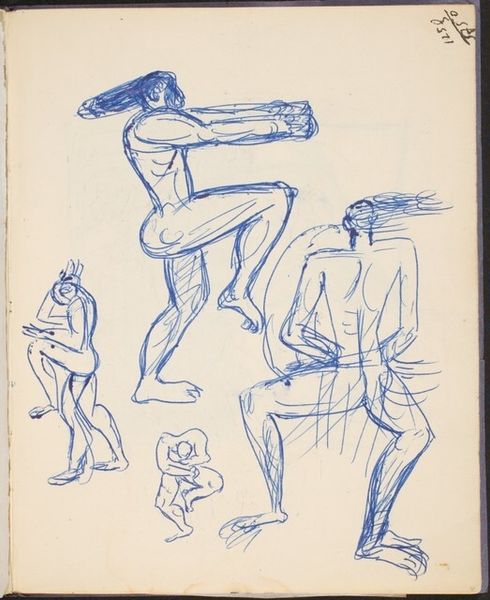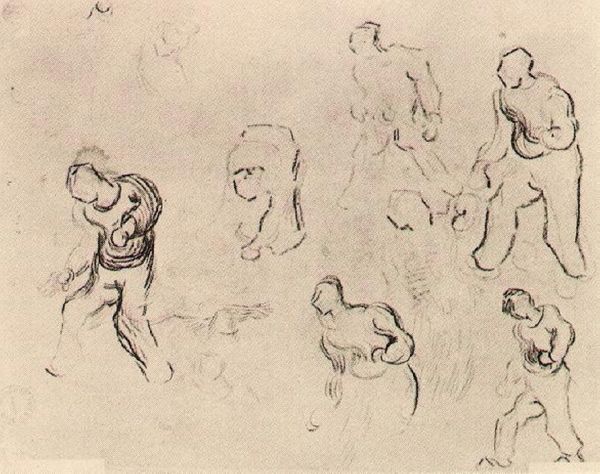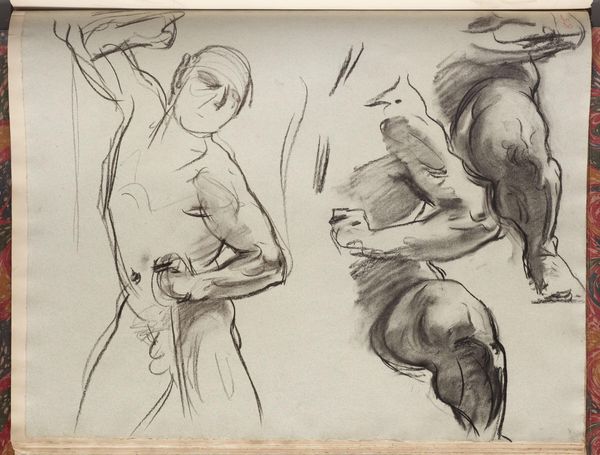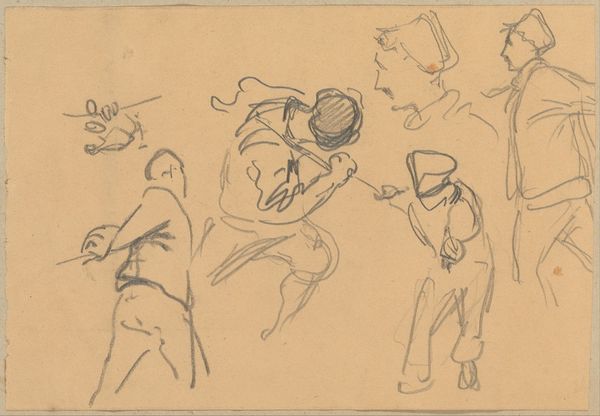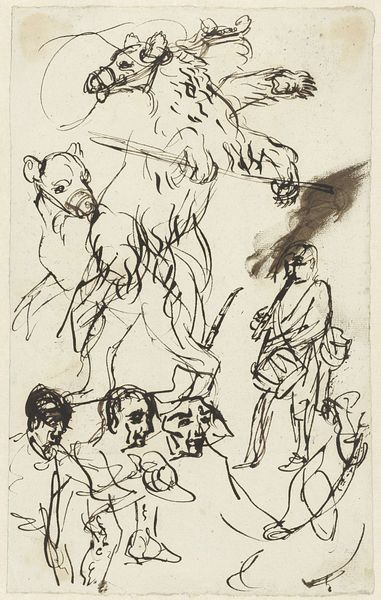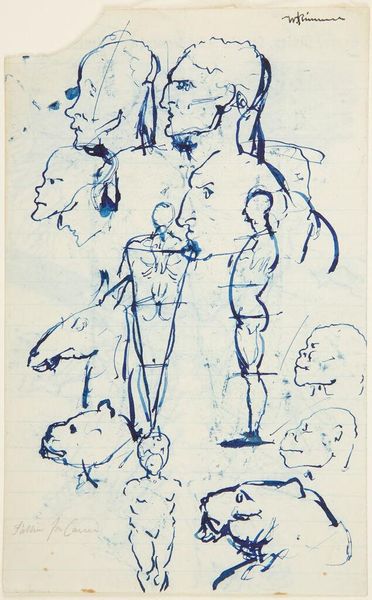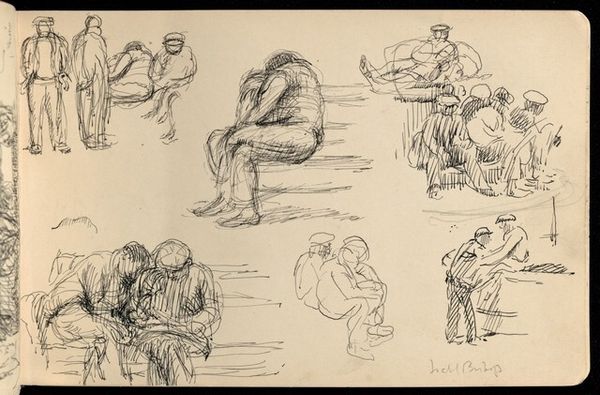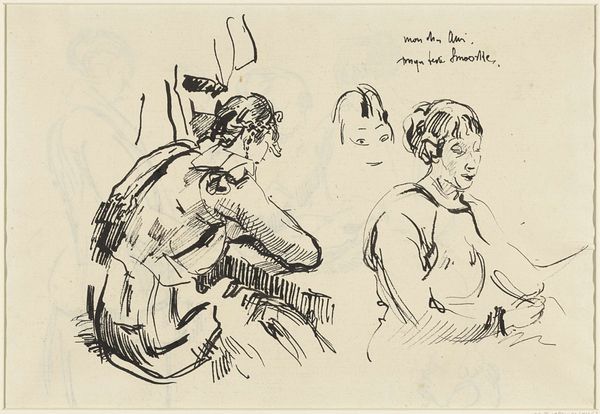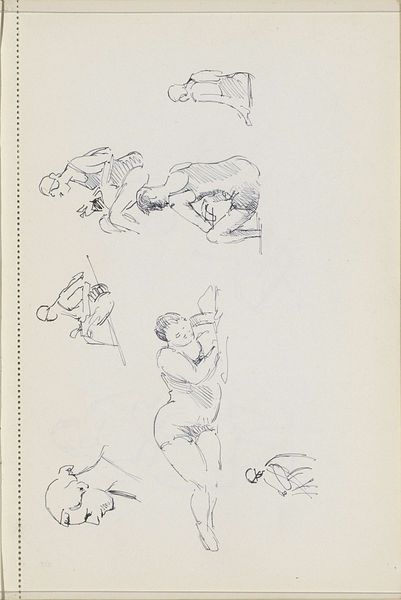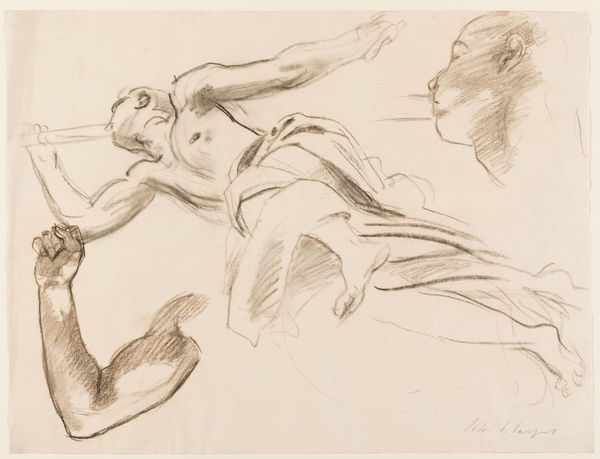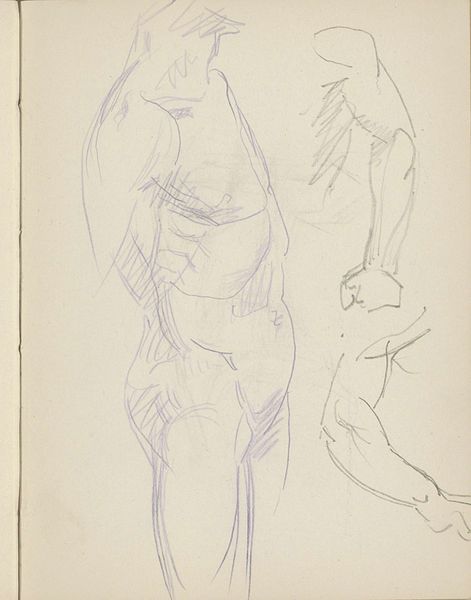
drawing, ink
#
drawing
#
ink drawing
#
figuration
#
ink
Copyright: Public Domain: Artvee
Curator: I find this 1908-1909 ink drawing by Magnus Enckell, titled "Luonnoksia istuvasta miehestä," to be incredibly raw and energetic. Editor: The cluster of figures certainly captures movement. There's a fragmented, almost dreamlike quality about the composition and use of line. It’s as though he’s capturing multiple instances of the same form. Curator: Precisely! From a material perspective, look at the sparse use of ink. It emphasizes the immediacy of the sketching process; you get the sense that Enckell was focused on quickly capturing the essential forms with minimal labor invested in shading or detailing. The labor is there, for sure, in the quick capture. Editor: Agreed. It reflects early twentieth-century attitudes toward male identity in a shifting societal context. Each pose tells a micro-story – defiance, introspection, even vulnerability – but combined, they become an aggregate portrait of masculinity in transition. Note also the way in which they are clustered to the point that each form loses its identity—in effect making a single composite identity that can stand for the generalized human body stripped bare. Curator: Good points! You can really see the act of sketching itself. It gives such an amazing insight into the production, challenging the romantic ideal of the solitary artist effortlessly producing a finished masterpiece, especially if this were produced within a larger body of work or project. It emphasizes work! Editor: And within that emphasis on work, one should understand Enckell's work itself as both a product of, and a challenge to, social and cultural norms about body image, societal expectations, and individual rights to free expression. It is the production of a representation of identity in its nascent form—the artist coming to know his subject. Curator: Ultimately, these sketches reveal an investment in understanding and portraying masculinity. Each sketch and stroke creates and is created by the work process, a wonderful glimpse behind the veil! Editor: This reminds us that even seemingly straightforward figure drawings exist within wider conversations about gender, power, and representation, leaving an open question about our understanding of being.
Comments
No comments
Be the first to comment and join the conversation on the ultimate creative platform.

